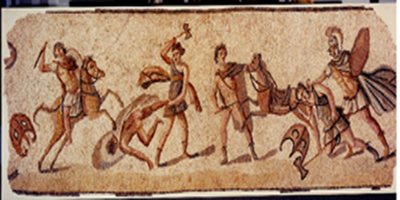One of the first characters you’ll meet in “Night in the Woods” is a neighbor who loves to constantly write odd and amusing poetry. As their writing puzzles you and makes you laugh, you might unconsciously dismiss them as a simple character with little of substance to say. But the game makes sure to subvert your expectations of this character, eventually revealing them as being much more than their quirky poetry with a scene that’s certain to leave you speechless. In the same way, “Night in the Woods” enjoys subverting any initial expectations you make of it because it is much more than what it seems. The ways in which it tackles relevant and vital issues that exist in the real world make it one of the most emotionally-resonant and thought-provoking games in recent years.
“Night in the Woods” begins by introducing you to Mae Borowski, a college dropout who has decided to return to her hometown, a small, former mining town called Possum Springs. It’s a puzzling decision to many, as Mae is one of the few people to have the opportunity to leave a town where people struggle to barely make a living. But Mae has her own reasons for returning, just as her hometown best friends Bea, Gregg and Angus have reasons for changing in ways Mae has yet to realize. As she tries to reconnect with them, she is pulled into the woods near Possum Springs by a dark mystery that threatens the safety of the townsfolk.
“Night in the Woods” features some of the most stellar video-game writing thanks to its dialogue, which brims with character and wit. Many of the jokes had me nearly crying from laughter several times. Just as easily, the game also had me actually crying because it is just as effective in portraying the pain and struggles of its characters. The elegance with which the dialogue travels across a spectrum of emotions grounds the writing; the dialogue contains enough honesty to say what it wants to say while highlighting a subtlety that encourages you to think and reflect on the complexities of its characters and messages.
In one particularly moving scene, Bea confesses the reasons for her coldness and resentment toward Mae. It’s an emotionally heavy scene, as Bea opens up about her how hard it has been to be with Mae since her return to Possum Springs. Rather than speaking without thinking as she usually does, Mae listens to Bea, prioritizing and validating her feelings and responding with her own. By the end of the conversation, Bea and Mae reach an understanding and even manage to make a few sarcastic jabs at each other. Other games could make that transition feel jarring, but the game’s dialogue is so well-written that instead, the scene captures perfectly the layers of a close friendship between two complex young women.
While “Night in the Woods” is a story-driven game, it has a few puzzle and mini-game sections. While those sections don’t feel necessary, they don’t take away from the game either. Some of them are fun, like the Guitar Hero-esque mini-game that starts when you choose to play an instrument for you and your friends’ band. Others are less so, verging on being tedious, but they don’t last long enough to make much of an impact.
The game also largely benefits from its vibrant visuals and soundtrack. The art is charming and colorful, and there’s a plethora of gorgeous shots worth capturing and turning into wallpapers. While the art isn’t extremely realistic like that of “Uncharted 4: A Thief’s End” or “The Witcher 3: Wild Hunt,” it still looks beautiful during the moments when the sun shines through the gaps of a bridge or when vibrant reds and yellows contrast the dark blues of the night. Critics have praised the soundtrack for enhancing every scene and strengthening the emotions the game aims to evoke. Even though the soundtrack has a wide array of different sounds and a variety of genres, it impressively still feels like a cohesive whole that complements the game’s writing. It is as effective in conveying the relaxed manner of a walk through Possum Springs as it is in capturing the tension of the game’s more chilling moments.
While the game’s central mystery is in no way mundane or weak, “Night in the Woods” truly shines in the intimate moments Mae spends with her friends, parents and the townsfolk. In those moments, the game doesn’t shy away from tackling themes like capitalism, mental illness and xenophobia with a degree of brutal honesty that is admirable and appreciated. There is no grace in how capitalism oppresses lower classes; how mental illnesses make an already difficult world in feel overwhelming; how looking at the past with rose-colored glasses breeds a dangerous nostalgia that makes certain people feel entitled to ostracize others. Chances are that you or someone you know has dealt with those issues, and it feels rare for a video game to tackle them with such honesty.
And yet, “At the end of everything, hold on to anything” is the game’s tagline because although “Night in the Woods” is relentless in its truthful depiction of somber themes, it is equally empathetic and even hopeful. It explores the importance of cherishing the tiny, ordinary things in life, regardless of the fact that they likely have an end; how happiness is fleeting but we must keep searching for it throughout loss, struggle and pain; how change is inevitable but often necessary.
You owe it to yourself to play “Night in the Woods.” It’s deeply poignant, heartwarming, tear-jerking and hilarious — sometimes all at once in ways that feel effortless. Playing “Night in the Woods” was such a powerful and emotionally resonant experience that it has me coming back to Possum Springs. Just like Mae, I’ve dearly missed it, and I’m ready to go back to the place that feels like home.






